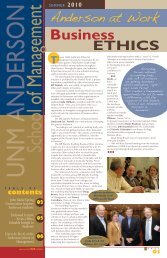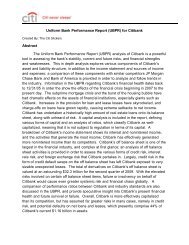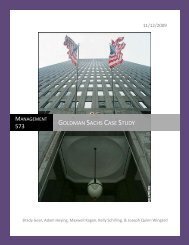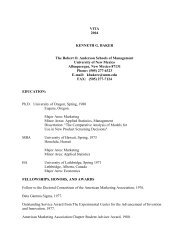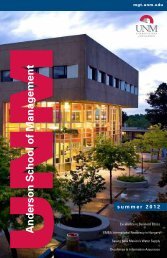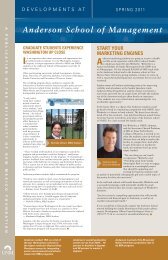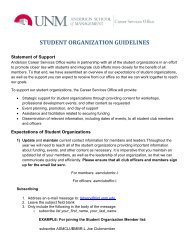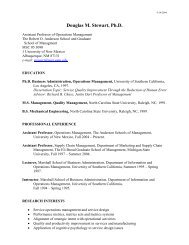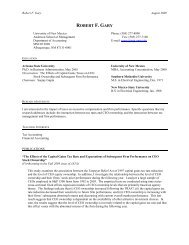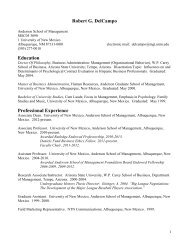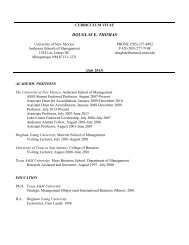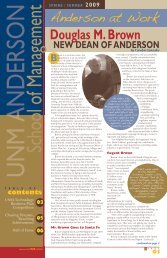Uniform Bank Performance Report - Anderson School of Management
Uniform Bank Performance Report - Anderson School of Management
Uniform Bank Performance Report - Anderson School of Management
Create successful ePaper yourself
Turn your PDF publications into a flip-book with our unique Google optimized e-Paper software.
significant increase from the figure in 2007: $519,374 million. This was partly due to the acquisition <strong>of</strong><br />
Washington Mutual in 2008 and the retaining <strong>of</strong> their questionable assets.<br />
As the faith <strong>of</strong> consumers towards the financial markets dwindled, JP Morgan’s investments segment<br />
suffered from a lack <strong>of</strong> those willing to invest in the stock, bond, or derivative markets. In 2008, assets<br />
bought and held for investing clients decreased. Debt and equity investments decreased from $347,357<br />
million in 2008 to $298,135 million in 2009.<br />
In addition to concrete securities, the trading <strong>of</strong> derivative securities such as options, forwards, futures,<br />
and Swaps also decreased drastically. The overall account for derivative receivables fell over 40% in one<br />
year as investors realized the uncertainty and high volatility <strong>of</strong> the derivative market. Derivative<br />
receivables went from $162,626 million in 2008 to $97,491million in 2009.<br />
Liabilities<br />
JP Morgan’s deposits represent 46.29% <strong>of</strong> total liabilities and are the primary source <strong>of</strong> funds for loans<br />
and other assets. From these deposits, a majority <strong>of</strong> the<br />
deposits are located in core interest bearing accounts and<br />
savings/time deposits with average interest rates <strong>of</strong> 1.55% in<br />
2008 and slightly lower rates in 2009 (figured from the massive<br />
drop in interest expenses).<br />
Other Liabilities are also borrowed to boost lendable funds.<br />
These include commercial paper, repurchase agreements<br />
(Repos), and federal funds. These liabilities are stated as<br />
current liabilities due to the fact that they mature in less than<br />
one year and trade in the money market. Therefore, they are<br />
highly liquid sources <strong>of</strong> funding. These liabilities are also<br />
volatile, as some mature in as little as three months. Accordingly,<br />
the overall/average level <strong>of</strong> these liabilities does not remain<br />
steady throughout the year. Borrowings from the sale <strong>of</strong><br />
commercial Paper (short term unsecured promissory notes from



